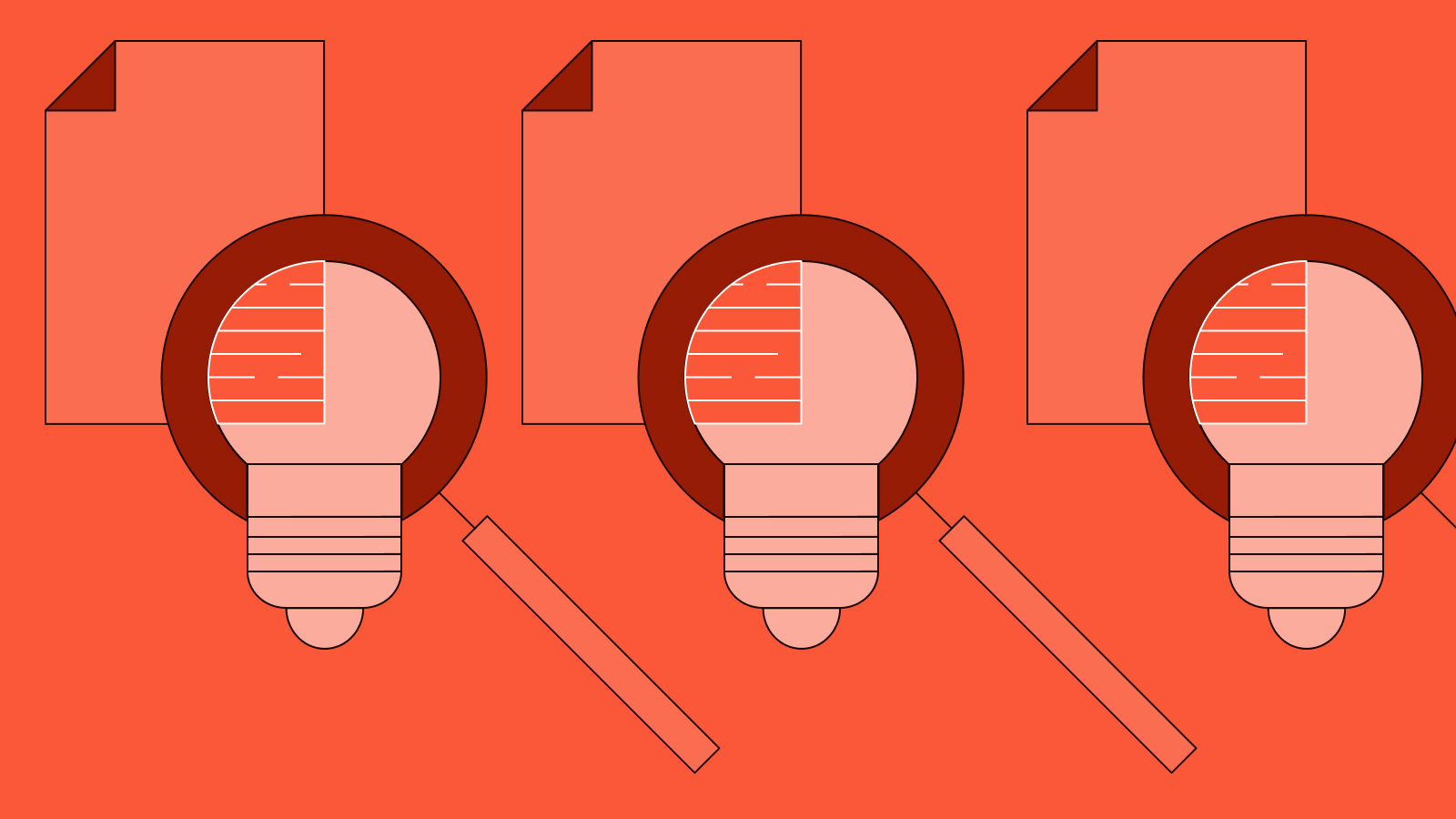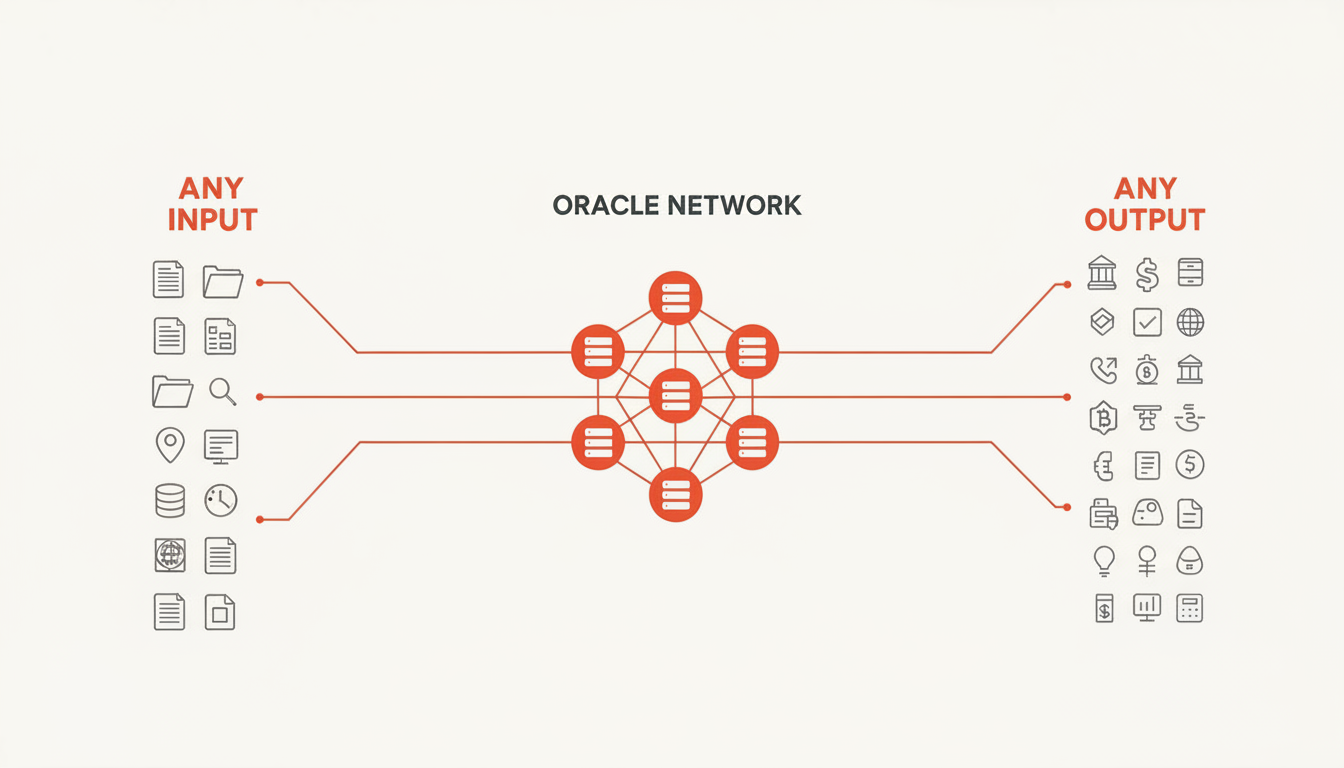What Are Blockchain Oracles: Connecting Smart Contracts to Real Data

Oracles in Smart Contracts: What They Are and Why They Matter
TL;DR
- Oracles link smart contracts to real-world data, enabling functional and adaptive blockchain systems.
- They exist in centralized, decentralized, and hybrid forms, each balancing speed, trust, and security.
- Key challenges lie in data integrity, manipulation resistance, and integration within modular architectures.
What Are Blockchain Oracles?
A blockchain oracle is a third-party, trusted system that connects smart contracts to real-world data, allowing blockchains to interact with information beyond their own network. Because blockchains are designed for security and immutability, smart contracts can’t natively access external sources like APIs or databases. Oracles bridge this gap by verifying and transmitting off-chain data onto the blockchain. Information varies from market prices and weather conditions to event outcomes.
Oracles can take many forms: a software service that queries APIs, a hardware device that relays sensor data, or a hybrid network combining multiple data sources for accuracy and reliability. What defines them is not just data delivery but data verification - ensuring the information provided is authentic and tamper-resistant before it reaches the chain.
In modular blockchain architectures, oracles are essential for maintaining data integrity and interoperability across separate layers such as execution, settlement, and data availability. By securely integrating at these layers, they enable scalable, connected ecosystems where smart contracts can make informed decisions based on verified external inputs.
What is an Oracle Network?
An oracle network is a decentralized system of multiple oracles working together to provide reliable data to smart contracts, enhancing security through redundancy and consensus. Unlike a single oracle, which may be a point of failure, an oracle network aggregates data from various sources (such as APIs, IoT devices, or other blockchains) and uses mechanisms like staking or voting to validate inputs. This distributed approach is vital for modular ecosystems, where oracle networks ensure robust data flows across chains.

In essence, an oracle is a system that listens for contract requests, retrieves the needed information, and submits it back on-chain. For modular blockchains, where layers like execution and data availability are separated, oracles integrate at the consensus or settlement level to maintain efficiency.
The Role of Oracles in Smart Contracts
Smart contracts thrive on automation, but without external inputs, their utility is limited to on-chain events. Oracles expand this scope, turning contracts into dynamic tools for finance, supply chains, and more. For instance, a lending protocol might use an oracle to check collateral values in real time, adjusting loan terms accordingly.
In modular designs, oracles prevent silos by linking disparate modules. They allow a rollup on Ethereum to pull data from a Solana-based oracle without full network synchronization. This modularity reduces overhead while preserving the blockchain's core guarantees of finality and verifiability.
Security here is paramount. Oracles must resist attacks like flash loan manipulations, where bad data could trigger erroneous payouts. Engineers often layer in cryptographic proofs or multi-source aggregation to mitigate these risks.
Types of Oracles: Centralized vs. Decentralized Approaches
Oracles vary in architecture to suit different trust models and use cases. Centralized oracles rely on a single provider for data, offering speed and simplicity but introducing a single point of failure. They're useful in low-stakes scenarios, like internal enterprise blockchains, where trust in the provider is high.
Decentralized oracles distribute the task across nodes, using consensus mechanisms to agree on data validity. This mirrors blockchain's ethos, reducing manipulation risks through redundancy. Chainlink, for example, employs a network of node operators who stake tokens as collateral, incentivizing honest reporting.
Hybrid models blend both, perhaps using a decentralized network for critical data but falling back to centralized sources for less sensitive queries. In cross-chain contexts, hybrids shine by routing data through bridges that verify oracle outputs via zero-knowledge proofs.
- Software Oracles: Handle digital data like APIs or web scrapes.
- Hardware Oracles: Interface with physical sensors, such as IoT devices for supply chain tracking.
- Inbound vs. Outbound: Inbound bring data in; outbound push on-chain events to external systems.
Choosing the right type depends on the application's risk profile and the blockchain's modular setup.
Challenges in Implementing Oracles
No oracle is foolproof. Data freshness poses a constant issue—stale information can lead to flawed contract executions, especially in volatile markets. Engineers address this with timestamp checks and frequent polling, but it increases gas costs on chains like Ethereum.
Manipulation is another hurdle. The "oracle problem" refers to the inherent trust gap: if the oracle is compromised, the entire contract ecosystem suffers. Flash crashes in DeFi have highlighted this, where manipulated price feeds led to millions in liquidations.
Scalability adds complexity in modular environments. As blockchains layer up by separating consensus from execution, oracles must handle higher throughput without bottlenecking the system. Solutions like optimistic oracles, which assume data is correct unless challenged, offload verification to disputers and save resources.
Security Considerations for Oracle Integration
Security isn't an afterthought; it's baked into oracle design. Cryptographic techniques, such as threshold signatures, ensure multiple parties sign off on data before it's accepted. This distributes trust and thwarts single-entity attacks.
In modular blockchains, oracles must align with the chain's security model. For instance, in a Cosmos-based ecosystem, oracles can leverage IBC (Inter-Blockchain Communication) for cross-chain data relays, but this requires verifying chain sovereignty at each hop.
Audits play a critical role. Regular code reviews and bug bounties help uncover vulnerabilities, like those in oracle adapters that connect to smart contracts. At Altius Labs, we prioritize formal verification for oracle modules, proving mathematical correctness in high-stakes integrations.
- Common Attack Vectors: Sybil attacks on decentralized nodes, bribery of data providers.
- Mitigations: Slashing mechanisms for dishonest nodes, diversified data sources.
- Best Practices: Use time-weighted averages for prices, implement circuit breakers for anomalies.
Oracles in Modular Blockchain Infrastructure
Modular blockchains break down monolithic structures into specialized layers, and oracles fit neatly as a data availability component. They decouple data sourcing from execution, allowing chains to scale independently. In Celestia-like setups, oracles can provide proofs of data integrity without bloating the base layer.
This modularity fosters innovation. Developers can plug in oracle modules tailored to specific needs, like climate data for sustainability tokens or RNG (random number generation) for gaming. The key is maintaining composability—ensuring oracles work seamlessly across modules without custom integrations.
For Altius Labs’ research, we explore how oracles enhance rollup sovereignty. By integrating oracle data into validity proofs or their verification process, we enable secure data imports without relying on external validators—preserving the chain’s autonomy and trust assumptions.
Cross-Chain Design and Secure Interoperability with Oracles
Cross-chain operations amplify oracle importance. Without them, assets locked in one chain can't respond to events on another. Oracles bridge this by relaying data across networks, enabling wrapped tokens or multi-chain DeFi strategies.
Secure interoperability demands robust protocols. LayerZero, for example, uses oracles to verify messages between chains, combining user-defined verifiers with decentralized oracles for added resilience. This prevents exploits like those seen in bridge hacks, where false data led to unauthorized mints.
In practice, consider a cross-chain yield aggregator. An oracle fetches yields from Avalanche and relays them to an Ethereum contract, triggering reallocations. The design must incorporate latency tolerances and fallback mechanisms to handle network partitions.
- Protocols for Interoperability: Wormhole integrates oracles with guardian nodes for message attestation.
- Challenges in Cross-Chain: Differing consensus speeds, potential for chain reorganizations affecting data validity.
- Engineering Solutions: Use hashed time-lock contracts (HTLCs) synced via oracles for atomic swaps.
Real-World Examples of Oracles in Action
Chainlink stands out as a decentralized oracle network powering much of DeFi. It supplies price feeds to protocols like Aave, where loans depend on accurate asset valuations. In a modular context, Chainlink's CCIP (Cross-Chain Interoperability Protocol) extends this to cross-chain token transfers, verifying data at both ends.
Another case is Band Protocol, which focuses on high-throughput oracles for Cosmos ecosystems. It aggregates data from multiple sources and uses bonded validators to ensure accuracy, fitting well into modular IBC designs. During the 2022 market downturn, Band's oracles helped protocols avoid cascading liquidations by providing reliable, tamper-resistant feeds.
These examples illustrate oracles' practical impact: they turn theoretical smart contracts into operational tools, but only when integrated with care in modular frameworks.
Evolving Trends in Oracle Technology
As blockchains mature, oracles evolve toward greater efficiency. Zero-knowledge oracles, for instance, allow private data computation off-chain with on-chain proofs, enhancing privacy in modular setups. This is crucial for enterprise adoption, where sensitive data can't be exposed.
Decentralized identity oracles are emerging, verifying user credentials across chains without central authorities. In cross-chain lending, this could mean pulling credit scores securely, broadening Web3's reach.
At Altius Labs, our work on modular oracles emphasizes plug-and-play interfaces, letting developers compose data pipelines without deep protocol knowledge. This shifts focus from infrastructure to application logic.
Conclusion
Oracles are indispensable for bridging blockchains to the external world, enabling smart contracts to handle real data with confidence. In modular and cross-chain environments, they underpin secure interoperability, driving innovation while addressing core challenges like trust and scalability. As researchers at Altius Labs, we continue refining these tools to build resilient, composable systems that advance blockchain's potential.
.svg)
